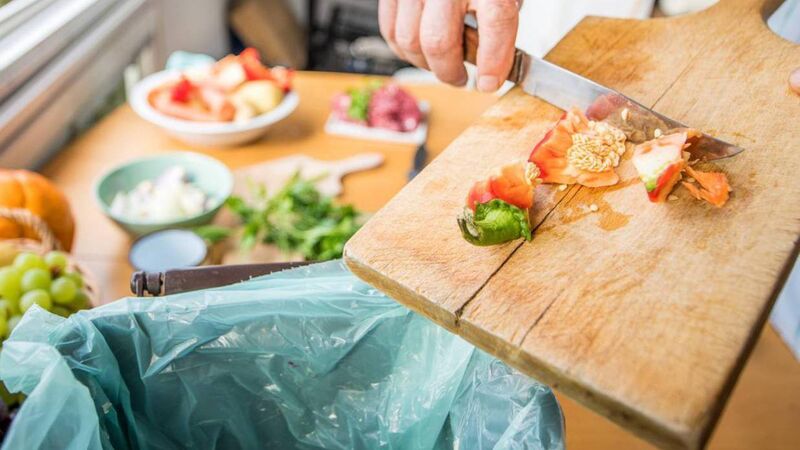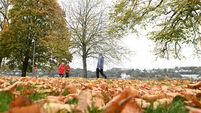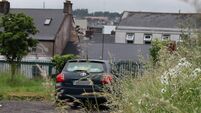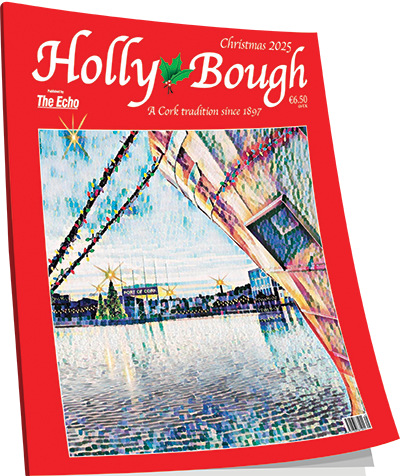Food Reset: Waste Less, Eat Better, Save Money

Food waste, Composting and Zero Waste
Let’s face it, January is a financially tight month and many of us are relieved to be near the end of it.
If there’s a chance to drag our moth-filled purse over the line to the January payday, it’s worth grabbing with both hands.
What if I told you one simple change could save you a whopping €700 per year? You’d probably have a mind to give it a go.
Let’s start with some stats.
Latest figures compiled by the Environmental Protection Agency (EPA) for 2022 show that, of the 750,000 tonnes of food waste generated in Ireland every year, 220,000 tonnes or 29% is generated by households.
That’s the half bag of salad leaves you forgot about in the bottom of the fridge, the leftovers you never ate, the packet of ham that went out of date, or the bread that went mouldy.
What that doesn’t include is food left on the plate at a restaurant, estimated to equate to 157,000 tonnes, or 21%, which also means we are more wasteful with food at home than we are outside of it.
Our most wasted food items are leftovers, bread, fruit and vegetables:
Some 43% of people said leftovers is the food they waste the most, with 41% saying Bread, 39% fruit, and 38% vegetables.
Not only is food waste expensive, it is also damaging to the environment.
As it breaks down, greenhouse gasses are released into the atmosphere, with 8-10% of these attributed to food waste.
If this all seems a bit unnecessary, you’d be right, and doing better is within our control.
Except for unforeseeable accidents, like a freezer breaking down or a power outage, we should be able to plan what we will eat in a week, shop only for what we need, plan to deal with leftovers, and become better aware of how much food waste we each generate in our homes.
Ready to save a few hundred euro? Let’s dive in with some top tips on reducing food waste!
AUDIT
Before you begin writing a meal plan, a list or heading to the shops, first you need to know what you do have. Look everywhere you have food stored. Not just obvious places like the fridge, freezer and fruit bowl, but also the kitchen presses, the spice rack, cereals, even where you store your drinks.
Everyone will have something that is past its best, and if it really can’t be used then sadly it will have to go. If you have a brown bin as part of your waste collection service, pop it in there and it can be recycled into useable compost.
Arrange your presses so that anything with a short use-by date is near the front, and longer dated items towards the back. Is there something lurking in a press that was a random purchase? (I have a tin of artichoke hearts and can’t remember why!) Find a recipe to use it in. Not only will you use up something you have, but you may also discover a new dish for your repertoire.
MEAL PLANNING
Life is busy, but it’s important to find a way that works for you to make sure there are healthy, balanced, nutritious meals available to steer you through the week.
Start with what you know you have in hand, now you’ve done your audit. Can you create a dish from that? If you can, pop that on your meal planner.
How many times have you been caught without anything prepared for an evening meal after a busy day at work and ended up spending a small fortune on a midweek take-away? Meal planning can help avoid that and save you money on an unnecessary spend.
Alternatively, schedule in the one night a week for a takeaway but be mindful of not over-ordering or have a plan to make use of any leftovers.
Slow and batch cooking are excellent ways to make food go further – especially cheaper cuts of meat that are always better slow cooked. Cooking a large amount of something like a pot of stew, a large joint roast, slow cooked pulled pork shoulder, curries and chillies, can help you make the most of your time, and cook meals that can be easily portioned, labelled and popped into the freezer.
Working with veggie-only bases means you can decide whether to have a meat-free dinner or add some frozen prawns, a chopped-up bit of chicken or leftover roast meat into the pot while reheating if you want a meaty bite to dinner.
Many more of us are working from home, so plan for lunch and snacks throughout the day. Batch-making soups, bean and chop salads, healthy snacks such as date, oat and peanut butter protein balls, cheeses, or batch-made fruit salads is a great way to make sure there are plenty of bites to hand. Include breakfasts, too.
Overnight oats are a great make- ahead breakfast.
MAKE A LIST
Now you have completed your audit, know what you have, have decided how many meals you need to make and what dishes you’d like to have during the week, it’s time to pull together your shopping list.
Go through your meal planner and make a note of every ingredient you need to make those dishes that you don’t already have to hand. The more often you do this, the shorter the list will become as you get used to free-wheeling with ingredients, batch- cooking and using up leftovers.
Stick to the list as best you can. Try not to be tempted by bulk buys or end-of-aisle bargains, especially with perishable items like meat, fish, veg and fruit, unless you know for sure you can either use it or preserve it, for example, by freezing.
Refill stores are great for purchasing exactly what you need. Want to make a dish that requires exactly 100g of dried beans or just one stick of cinnamon? A refill store is where you can measure out just what you need, helping you to control your budget.
COOKING WITH FOOD WASTE
Keep a Ziplock bag in the freezer and every time you peel a carrot, prep a leek, or top and tail a garlic clove, pick off the outer leaves of a leafy veg, put it all in together, and when it’s full pop in a large saucepan with some water and herbs and make yourself some stock. Portion it off and use for making soups, risotto, braises, etc. You can do the same with chicken carcasses, and fish bits too for making homemade flavour-bomb chicken or fish stocks.
Save energy by reusing water used to cook vegetables. For example, I’ll steam potatoes first, then reuse that water to boil my vegetables. It reduces water waste and electricity use by reusing already hot water.
LEFTOVER LOVE
No matter how good any of us might get at meal planning, sometimes leftovers will happen! Think how you might use them and when.
If it’s unlikely they’ll get used in the next one or two days, it’ll need to go into the freezer (labelled and dated with portion size).
When it comes to dining out, restaurants are getting better at creating dishes portioned and devised so they generate no waste. However, if a plate of food has beaten you, ask for a ‘doggy bag’ or a container to take it home with you. Most restaurants will be more than happy to oblige as it means they don’t have to deal with the waste themselves.
If you want to close the circle even more, bring your own container!
FEEL SMUG!
These are all such simple actions to take that you’ll wonder why you didn’t give it a go before! Chances are you are eating better and enjoying time in the kitchen experimenting with flavours, learning new recipes, or discovering you’re actually a pretty good cook.
You should also find yourself shopping, spending and wasting food less, making better use of your time, and reducing climate impact by making the most of the resources it takes to get food from plot to plate.
CHALLENGE YOURSELF
Having a go and growing something of your own food really helps to raise awareness of what it takes to grow food to eat. In any amount of space – a windowsill, a balcony, a courtyard or a garden – you can have a go at growing your own food.
Potatoes in pots; herbs, chillies, microgreens and lettuces on windowsills; tomatoes in that sunny spot outside the door… find some room, grow something and discover a new appreciation for fresh food.
RESOURCES
There are some great resources for making the most of our food and to help reduce waste at home.
StopFoodWaste has loads of great information and recipes: www.stopfoodwaste.ie
Magneplan is a magnetic interactive meal planner with loads of great recipe ideas designed with busy families. See www.magneplan.com
Cookbooks are always a great source of inspiration, and recently there has been a flurry of accessible books specifically with the aim of reducing food waste in mind. Wasted (Conor Spacey), Funky (Caitlin Ruth), Whole Catch (Aishling Moore), and coming soon Larder (Orla McAndrew) are all Blasta Books with a focus on would-be food waste. www.blastabooks.com







 App?
App?





